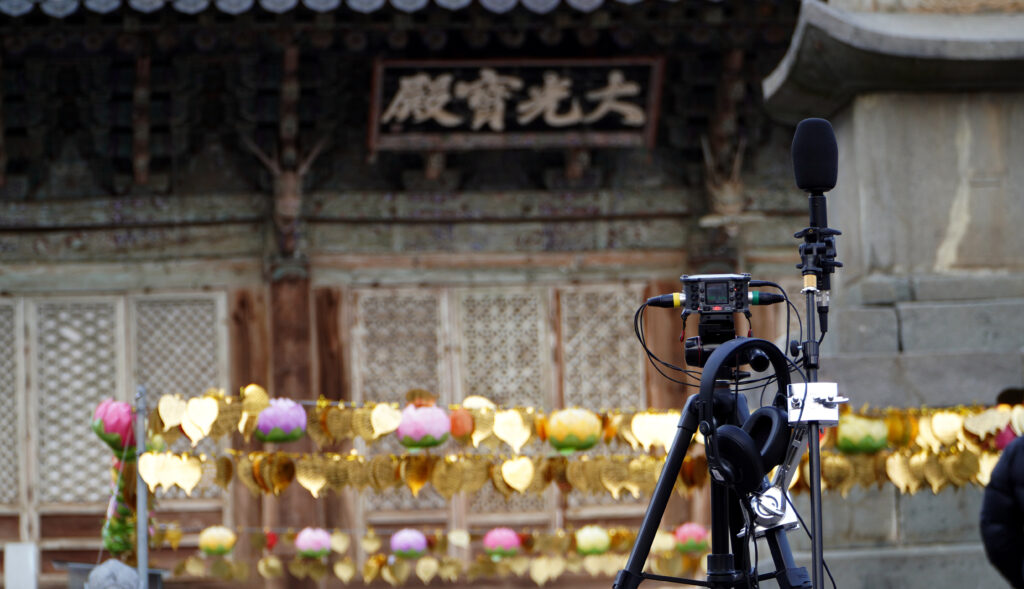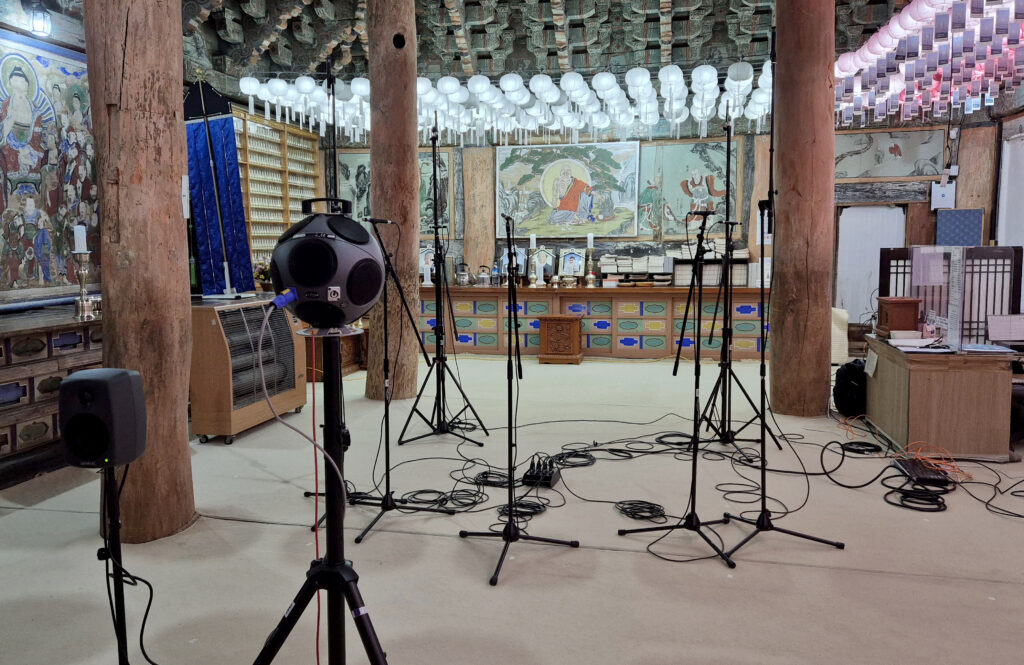
As winter delivered its final shiver before yielding to spring, the Aural Heritage team spent February 2nd to 6th documenting the soundscape of Magoksa Temple (마곡사) in Gongju, Chungnam Province, Republic of Korea. This historic site is one of the seven mountain Buddhist monasteries collectively known as Sansa (산사 – 한국의 산지승원), which were inscribed as a UNESCO World Heritage serial property of the Republic of Korea in 2018.

For this venue, OH Kyung Taek, SATO Rai, and KIM Sungjoon collaborated with Dr. SHIM Hyeseung* to understand the temple’s intangible heritage values and develop effective documentation strategies. Under the guidance of Prof. KIM Sungyoung (AIRIS captain), the team was able to devise and implement a sound recording technique tailored to the site. The three AIRIS members then spent four intensive days on-site capturing the unique acoustic characteristics of this sacred vernacular space.
Magoksa Temple is situated on the eastern slopes of Taehwa Mountain, adjacent to the Magok River. The processional pathway from the entrance gate to the inner sanctuary guides visitors on a reflective journey through the site’s cultural landscape, marking a gradual transition from the secular to the sacred. This deliberate approach underscores how the temple’s architecture integrates seamlessly with its natural setting.
The winter snowfall enveloping the temple complex produced an acoustic environment characteristic of Korea’s traditional mountain monasteries. Our documentation recorded a transient soundscape: the gentle fall of snow from the upturned roof tile eaves, the resonant tones of bronze wind chimes against the quiet winter air, the interplay of flowing water and ice in the mountain stream, and the subtle movement of bare branches in response to ambient conditions.
The temple complex exemplifies refined principles of Korean Buddhist architecture, with the built environment harmoniously integrated into the surrounding mountainous terrain through careful spatial planning and architectural adaptation. This union of sacred design and nature reflects the enduring Buddhist notion of interconnectedness, maintaining the site’s function as both a place of worship and a spiritual retreat.

Our team successfully recorded impulse responses from three significant structures: the Main Buddha Hall (대웅보전, Daeungbojeon), the Great Light Hall (대광보전, Daegwangbojeon), and the Hall of the Vulture Peak (영산전, Yeongsanjeon). We also captured comprehensive soundscapes of both natural and anthropogenic sounds at the site, including recordings of Buddhist ceremonial chanting.
While we cannot share all details at this time, we look forward to presenting our findings in upcoming conferences, journals, and workshops. Please stay tuned for future updates.

We extend our deepest gratitude to Venerable Wongyeong (원경스님), the head monk of Magoksa Temple, for granting us access and providing generous hospitality throughout our documentation work. We also thank Dr. SHIM Hyeseung and Dr. RII Hae Un† for their invaluable assistance in facilitating our initial connection with the temple. Special thanks to CHOI Yongwon§ for documenting our field work through photography.
And as always, we extend our sincere gratitude to our captain, Prof. KIM Sungyoung, for initiating this project and for his ongoing, invaluable guidance and support.
*Assistant Professor, Department of Sociology, Hong Kong Shue Yan University | Board Member of ICOMOS Korea
† Emeritus Professor, Dongguk University | President, ICOMOS ISC on PRERICO (Places of Religion and Ritual)
‡ Head Monk of Magoksa Temple
§ Ph.D. Student at KAIST